The Body
Susceptible to injury, disease, and age, our bodies are constantly sites of risk. The likelihood of danger to them is compounded further by environmental factors, societal expectations, financial burden, and legislative policies. Thriller and Pure Gold is Seeping Out of Me addressed these elements head on.
Generation After 3 opened with Thriller, a collaboration between Sonia Roszczuk, Paweł Sakowicz, and Anna Smolar that posed the question: Is it possible to reclaim one’s body for one’s own self? Their exploration of this question involved experiencing an “ordinary day” in two dancers’ lives from the perspective of their bodies. While unflinchingly gazing at the audience, Sakowicz and Roszczuk danced vigorously to rock and electronica music, taking pauses to narrate moments of their day and parts of their bodies: obsessions with long fingernails, embarrassment at an air-kiss greeting that ended with lips on earlobes, paralysis when a mother walked in on a private masturbation moment, and horror when menstrual blood soaked through a leotard.
By the end of the show, the performers have completely exhausted their bodies from the hour of high-powered dance, and their initial sparkly makeup has mixed with sweat on their clothes. Roszczuk slumps against Sakowicz, and they fantasize that their bodies have changed—that they have a long, long tail, which, “in the end, could destroy cities.” Is this how one reclaims one’s body? By pushing it to exhaustion so much so that the mind transforms it into a fantastical beast? In Thriller, the only way for a person to claim physical control of their body—especially after it is fatigued by a “normal” day—is to use imagination. Whatever risks exist in the physical world for our bodies, the imagination can mitigate them.
Whatever risks exist in the physical world for our bodies, the imagination can mitigate them.
In Pure Gold is Seeping Out of Me by Renata Piotrowska-Auffret, the artist moved through the terror and ecstasy of the politicized relationship women have with reproduction, asking: “What if the desire to give birth is impossible to fulfill if it is restricted by legal regulations and restrictions?” Pregnancy and birth is already a risky undertaking, with approximately 830 women around the world dying every day from childbirth-related complications—a statistic with deep political implications, as maternal mortality rates often highlight the economic inequities of healthcare accessibility. Add on top of these risks the reports of the Polish government targeting women’s rights and access to reproductive health (and, closer to home for me, the impersonal and dangerous conditions of maternal health care in the United States and the worsening state of women’s reproductive rights as I’ve been writing this piece), and Pure Gold is Seeping Out of Me morphed into a powerful piece that drew strong emotional reactions.
Addressing us directly, Piotrowska-Auffret narrated first-person accounts of women (mostly artists) who wanted to conceive but had difficulty doing so due to finances, relationships, biology, and more. Interspersed within the monologues were short movement pieces and a skeleton in an awkward standing position projected on a screen. Piotrowska-Auffret moved, mimicking the skeleton in exaggerated postures. These movements, she told us, were part her process in the studio on a project called “Death: Exercises and Variations” and were meant to juxtapose her role as an artist with women’s desires to be mothers. She was asking questions like: Is the desire to be a mother a kind of death for the woman artist, as she must put aside her process to take care of her child? Or is the act of being an artist—yet choosing to let go of the desire for a child—a kind of death for potential motherhood? Her clownlike poses relieved the tension of stories about endometriosis, ovulation, laparoscopies, and speculums—drawing laughter from the audience—but the reminder of death and choice embodied in the skeleton loomed over her.
Piotrowska-Auffret was eventually joined by Karolina Kraczkowska and Aleksandra Osowicz. They also narrated women’s stories until they began to embody the act of labor and delivery onstage. Bathed in red light, Piotrowska-Auffret and Kraczkowska groaned and writhed on the sides while Osowicz described birth and finally declared, in a guttural cry, “I have power!” With one final blood-curdling scream, Osowicz mimed a baby being born and immediately switched into the role as an onlooker, moving towards the audience and shaking their hands, saying, “Congratulations. You’re a mother.”
During the simulated act of labor, I found myself openly crying, reminded of the nexus of power and powerlessness inherent in the act of giving birth—the laboring mother is a source of power, bringing new life into the world, and yet she faces disempowerment from the medical and political systems around her. Next to me, another audience member was laughing, presumably from the absurdity of it all. Circling back to the piece’s original question, if birth were impossible for women to fulfill based on regulations and restrictions, Pure Gold is Seeping Out of Me suggests they would find a way to fulfill their creative impulses anyway—whether by having a child or being an artist or both—no matter what the circumstances.

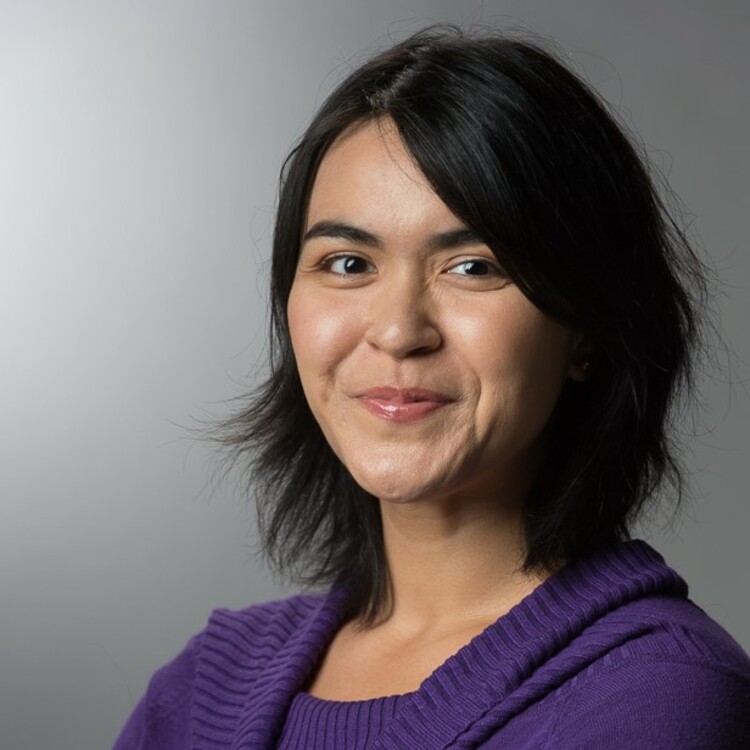
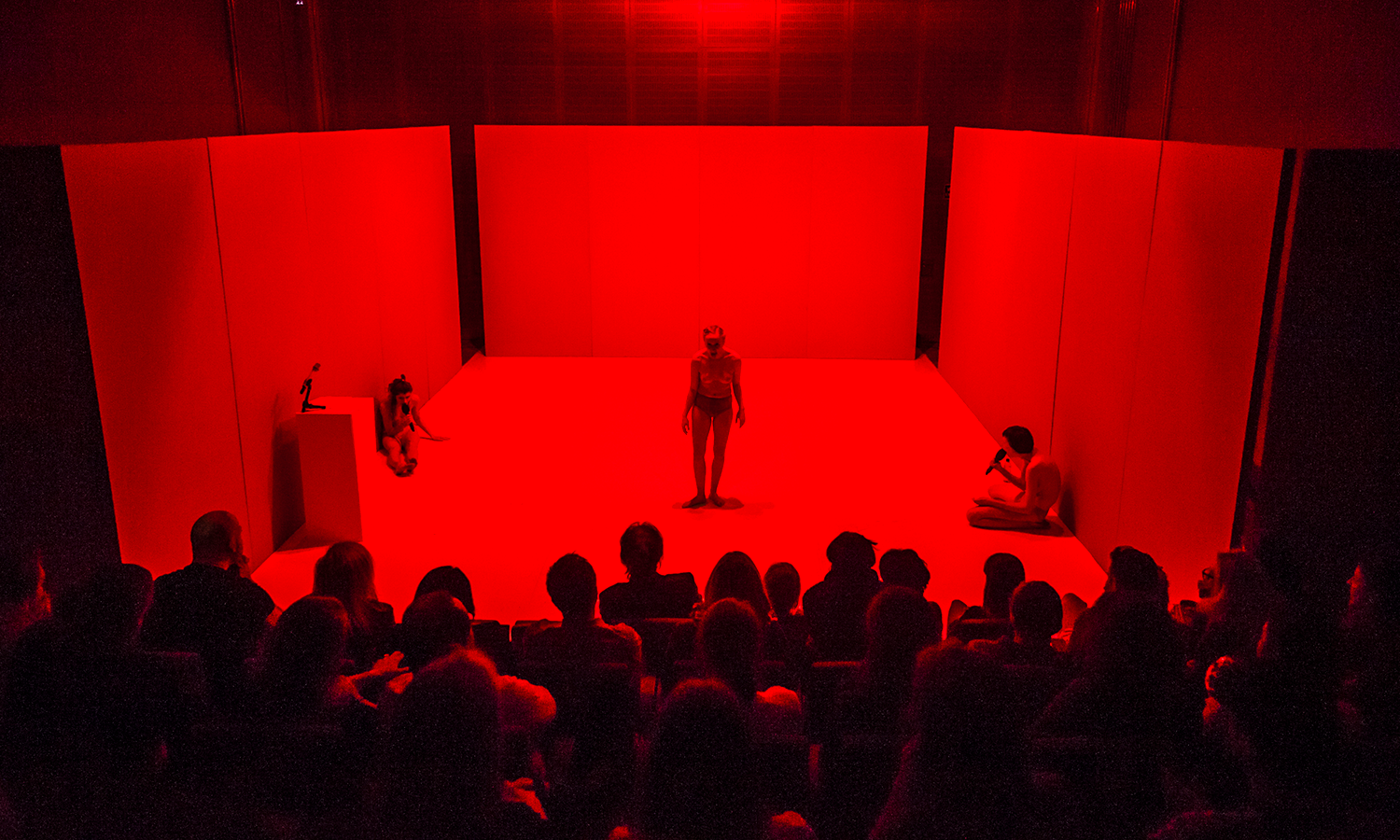
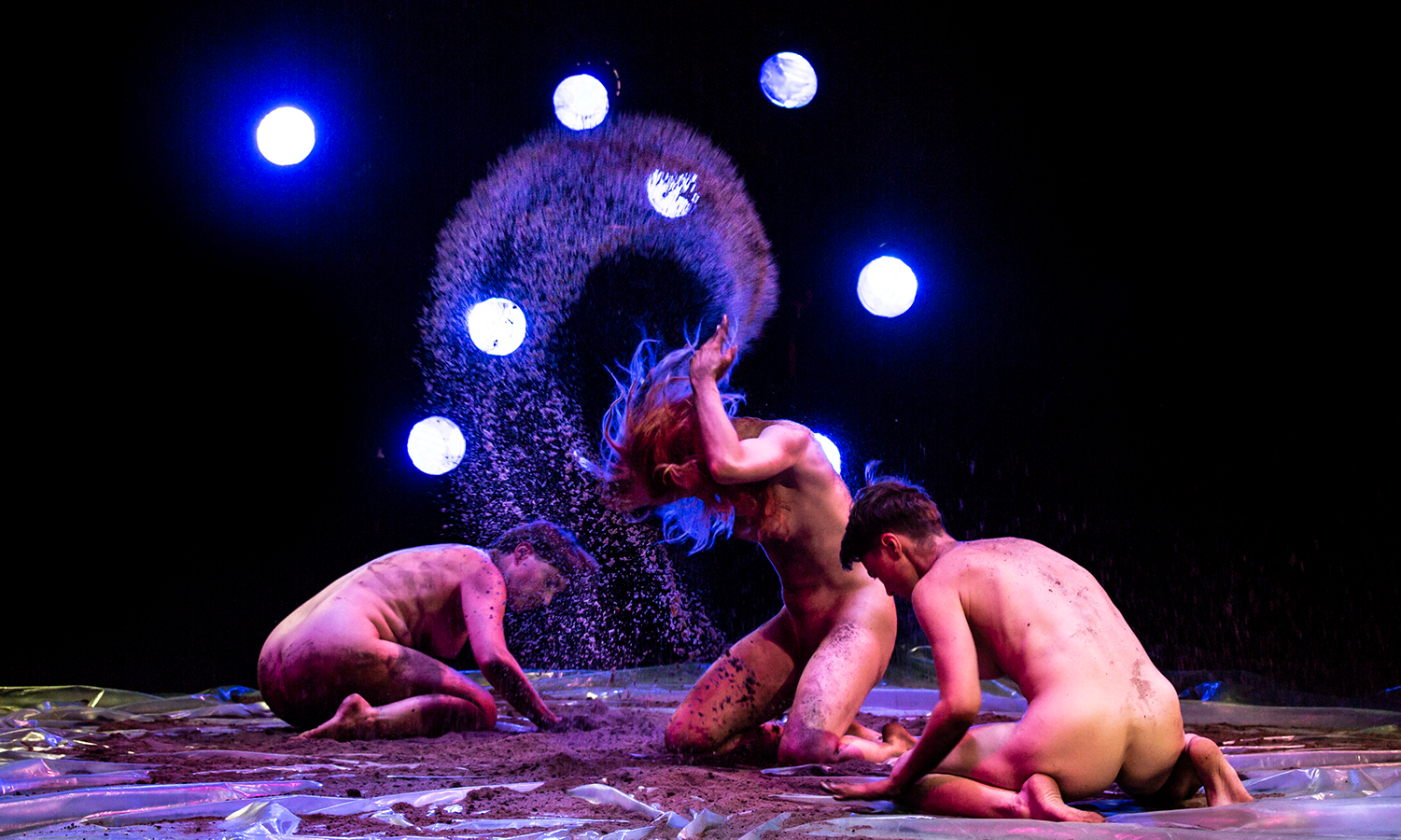

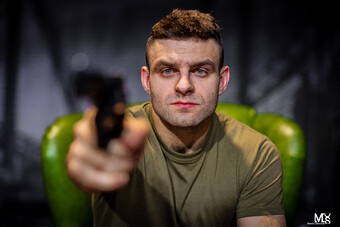

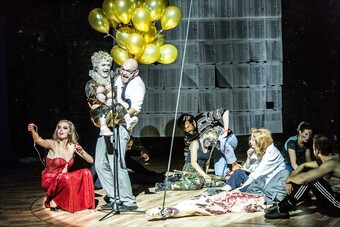

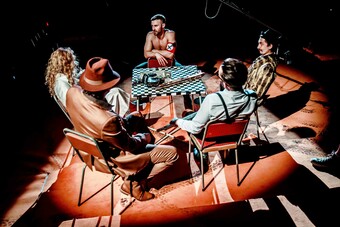


Comments
The article is just the start of the conversation—we want to know what you think about this subject, too! HowlRound is a space for knowledge-sharing, and we welcome spirited, thoughtful, and on-topic dialogue. Find our full comments policy here